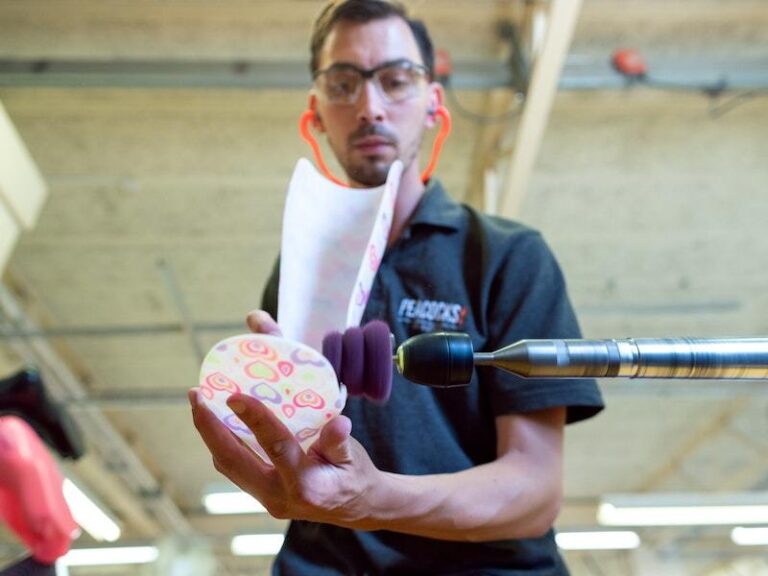Medical sciences and pharmaceutical products play a predominant role in the health and safety of the public. Ensuring the quality of each medical product along with medicines becomes essential. Every step should be carefully analyzed in making medical devices, from product designing to manufacturing and final inspection.
What Is Injection Molding?
Injection molding is a process by which plastic components are produced with high precision, accuracy, and quality. It is a cost-effective method that uses injection molding machines, spare parts, raw material, and molds like Teflon molds bought from a PTFE products manufacturer, plastic molds purchased from a plastic manufacturing unit, etc., to produce the required goods.
The technique is often used to manufacture high volumes of identical objects consistently. They are based on the clamping pressure or tonnage- the higher the clamping pressure, the larger the machine and vice-versa.
The main components of the process are:
- Molding
- Clamping
- Injecting
- Cooling
- Ejecting
The production cycle of this process is high-speed, generally lasting from 2 seconds to 2 minutes, having continuous repeat cycles. The cycle restarts at step two after completing the process once for one product as the mold remains the same for a stock of products.
Advantages Of Injection Molding:
The injection molding technique has various advantages:
- In this process, the manufacturer can use multiple materials simultaneously, including different colors, patterns, etc.
- It makes the design for complicated products such as geometrical designs easy and smoothes the manufacturing process.
- The process is mostly capital intensive, and it saves high labor costs.
- The products are consistently produced similarly, making it easier to fulfill large orders.
These are major plus points that one considers when looking for a precisely made plastic or Teflon-based product.
Applications Of Injection Molding:
Food And Beverage Industry:
Relying heavily on injection molding, the food and beverage industry uses plastic-based packages for the food. They rely heavily on plastic containers made precisely for their use as they have to stick to specific rules and regulations set by the Food Corporation in their country. Injection molding ensures that the quality of materials used, shape, size, color, and quantity of the containers are up to the mark. It also ensures that the plastic containers meet the government requirements and are not harmful when delivered to consumers.
As injection molding can combine several materials simultaneously, it becomes easier to produce food-grade quality packaging which does not react with any components in food of any kind. From bottle caps to fancy wine bottles, injection molding is the solution for everything the food and beverage industry relies on.
Medical Equipment And Pharmaceuticals:
A separate branch of this technique is often used for medical and pharmaceutical products called a medical device injection molding factory, where only products used by the doctors, nurses, etc., are produced to ensure maximum possible patient safety. Medical products must be non-porous, shatter-proof, unbreakable, and perfect in shape and size, without any side effects for the patient.
To ensure that they are made with suitable material for particular requirements, injection molding uses precision molds for medical products. From smaller components such as pill bottles, or medicine strips to more extensive equipment, X-ray equipment, and surgical equipment, injection molding comes in handy in the medical sector as it is affordable and precise.
Electronics:
In the electronics industry, injection molding plays a vital role as electronics are predominantly metal-based products that must be shock-proof and safe for consumers. Injection molding is used to design and manufacture various products such as bulb holders, tube lights, fans, led light strip bulk, led lamps, AC components, etc. The computer you are using to read this article also makes use of this technique to perfect its function.
For the electronics industry, all the devices must be corrosion-free and work for a longer time as customers look for durability in electronic products.
Automotive Parts:
The automobiles you use nowadays, from electric bikes to fancy cars, use equipment made by injection molding techniques. Primarily every player in the automobile industry now resorts to plastic injection molding to plan, develop, manufacture, and designate the parts they need in their automobiles. The automobile industry needs parts intricately manufactured in sleek modern designs that serve both purposes- elegance and functionality. With cars, durability and comfort are equivalent factors when it comes to typically molded products like dashboard, mirrors, cup holding, bumpers, etc.
Household:
From the building material used as the base for your house to the Tupperware in your kids’ school bag, many things from the kitchen to the bathroom are injection molded. With several factors considered while designing household products, it becomes essential to prepare for the comfort of the people who buy them. Injection molding being cost-effective reduces the burden of spending vast amounts of dollars on regular household products. With injection molded products, one gets a durable product at affordable prices.
Conclusion:
Manufacturers of such products need to ensure that they have the right equipment for precisely and intricately designed injection molded products as the design and build of the part can make a lot of difference in the overall outcome.
